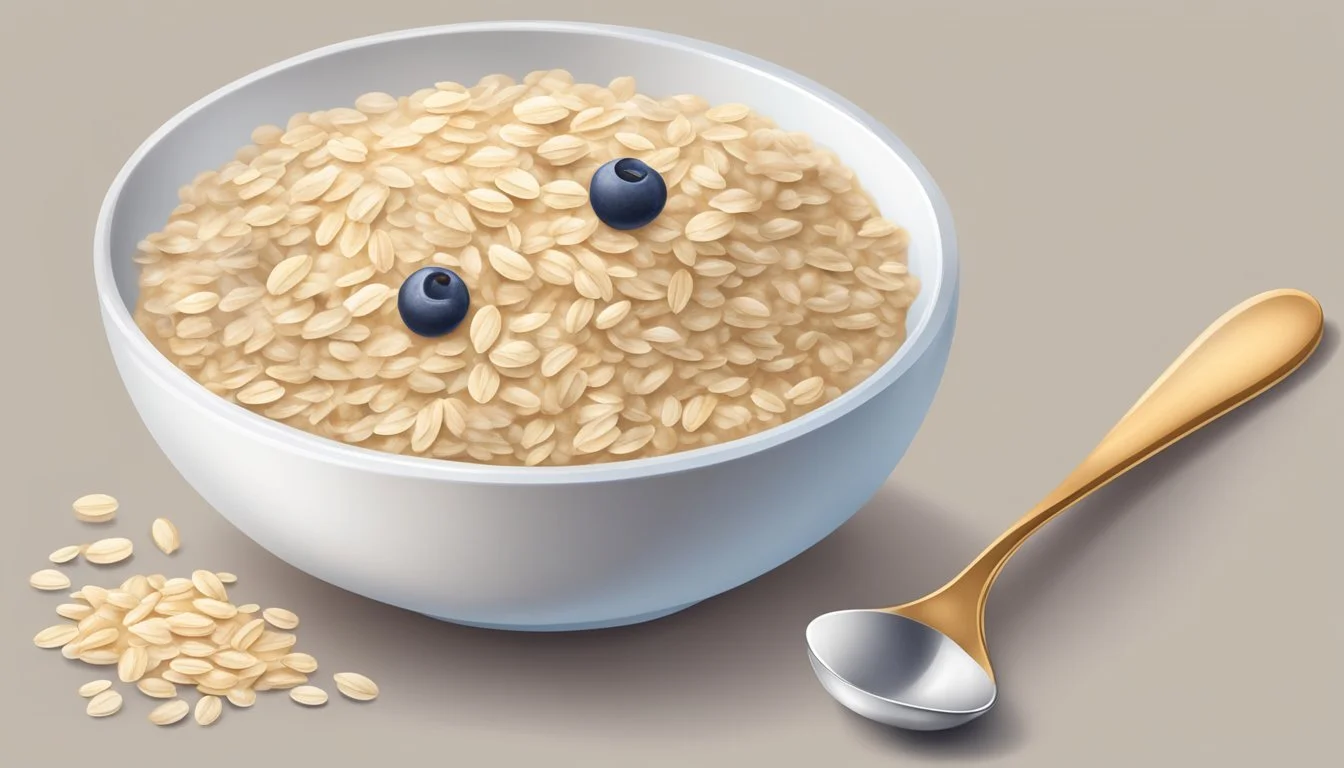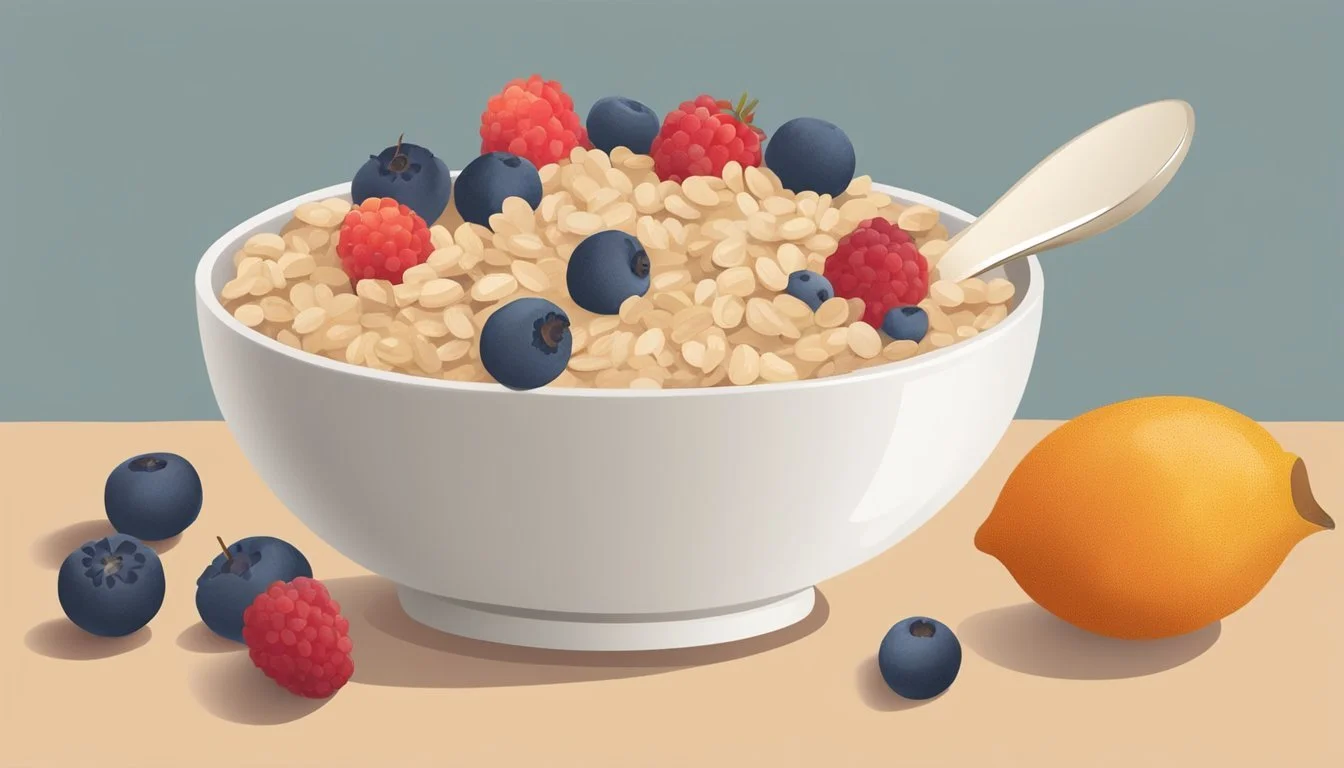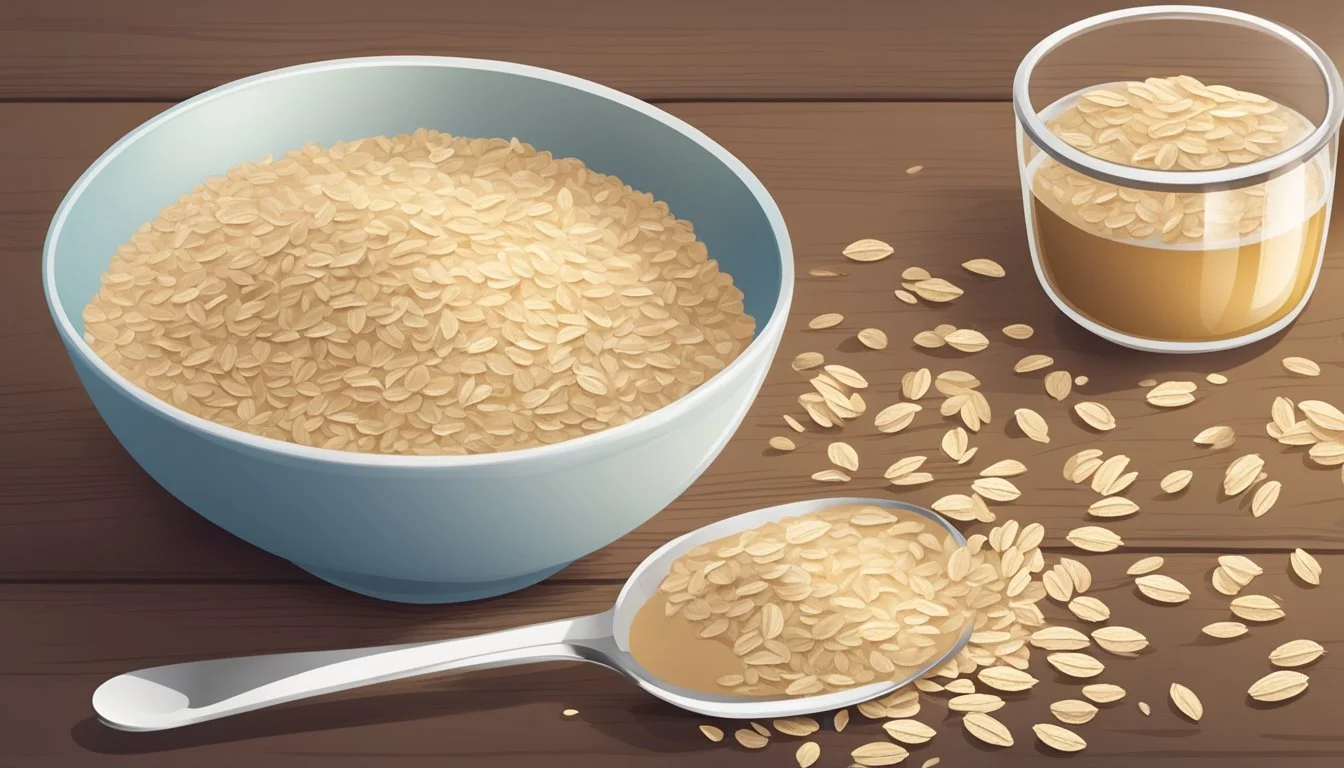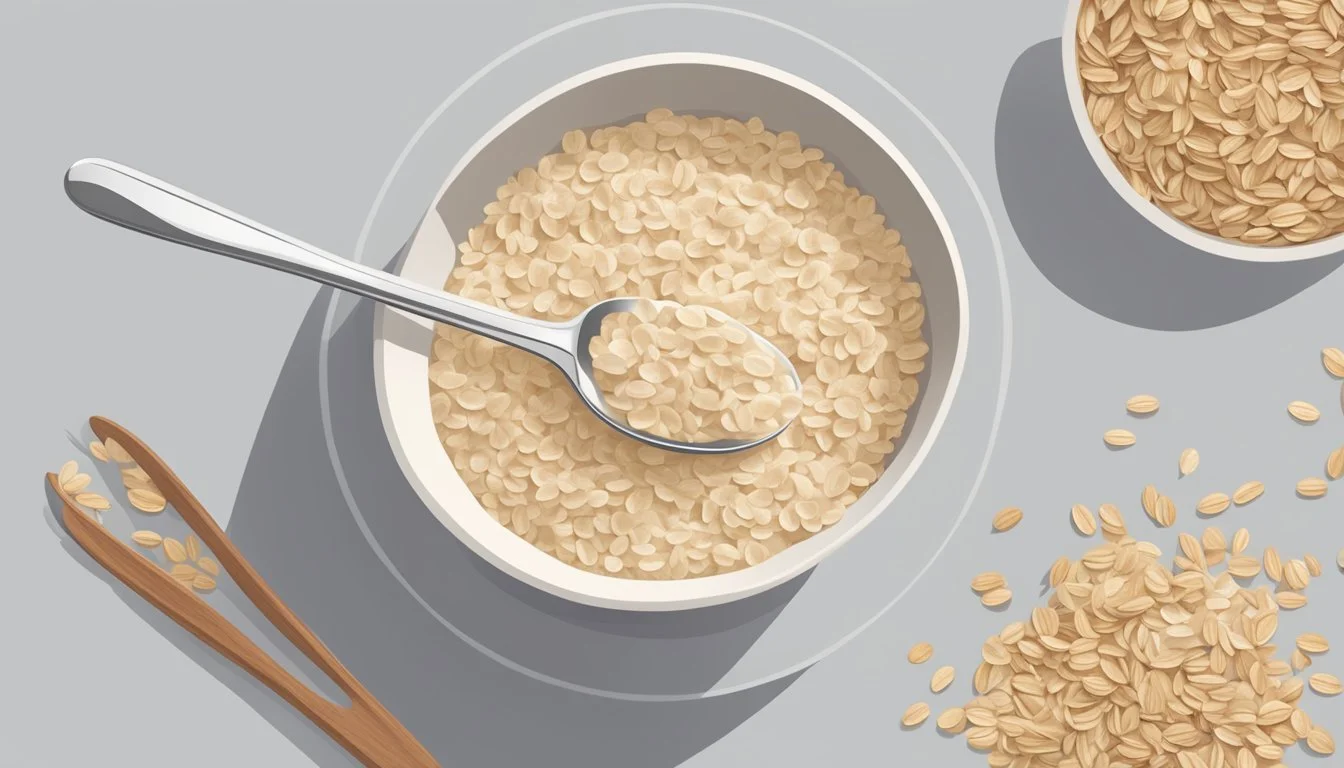How Much Oatmeal Should You Consume for Fiber?
Understanding Daily Intake Recommendations
Oatmeal is a staple breakfast grain known for its nutritious qualities, particularly its high fiber content. As part of a balanced diet, fiber plays a crucial role in maintaining digestive health, managing blood sugar levels, and contributing to heart health. A single serving of oatmeal, which is typically 1 cup of cooked oats or 1/2 cup of raw oats, provides approximately two grams of soluble fiber. Soluble fiber is the type that can help to lower cholesterol levels, potentially reducing the risk of heart disease.
To maximize the health benefits of eating oatmeal, understanding the recommended intake of fiber is key. Nutrition guidelines suggest that adults should aim for a minimum of 25 to 38 grams of fiber per day, depending on one's energy intake and nutritional needs. Eating oatmeal can contribute significantly to this goal, especially when it is part of a fiber-rich diet that includes fruits, vegetables, and legumes.
In terms of oatmeal quantity, consuming 1.5 cups of cooked oatmeal or 3/4 cups of raw oats could provide the recommended three grams of soluble fiber derived from grains for heart-health benefits. However, this is just a portion of the daily fiber target, with the remaining intake to be sourced from other high-fiber foods throughout the day. Combining oatmeal with nutrient-dense toppings such as berries and nuts not only enhances the fiber content but also adds variety and additional health benefits to the meal.
Nutritional Value of Oatmeal
Oatmeal stands out as a nutritious breakfast choice due to its balanced composition of carbohydrates, protein, and fiber, alongside a modest calorie count that suits various dietary needs.
Nutritional Components
Oatmeal is a nutrient-dense food that provides a substantial amount of the daily nutrient requirements. It is composed mainly of complex carbohydrates, which are digested more slowly than simple sugars, thus preventing rapid spikes in blood sugar levels. Carbohydrates account for about 28 grams per serving. Protein is another key component of oatmeal, offering around 5 grams per serving, aiding in muscle repair and growth. Oatmeal contains a small amount of fat, which varies depending on the type, but remains low overall.
The real highlight of oatmeal is its fiber content, particularly the soluble fiber known as beta-glucan, which can support heart health by lowering cholesterol. One serving typically contains around 4 grams of fiber, half of which is soluble. The fiber provides a satiating effect that can help with appetite control throughout the day.
Moreover, oatmeal is fortified with essential vitamins and minerals, including iron, magnesium, and zinc, contributing to its nutritional profile. The bran layer, in particular, is a boon of nutrients, and consuming oatmeal ensures one ingests this beneficial component.
Caloric Content
The caloric content of oatmeal renders it a filling yet calorie-conscious option. A standard serving of cooked oatmeal, which is roughly equivalent to half a cup of dry oats, typically contains about 150 calories. It should be noted that additional toppings or sweeteners will alter the caloric value, and should be accounted for in one's dietary intake. The energy provided by these calories in oatmeal is released gradually due to its complex carbs and fiber, which aids in sustained energy levels throughout the morning hours.
Health Benefits of Oatmeal
Oatmeal, a nutrient-dense food rich in both soluble and insoluble fiber, offers numerous health benefits, particularly for heart health, weight management, blood sugar regulation, and digestive health. These benefits are attributed to its components such as beta-glucan, a type of soluble fiber.
Heart Health
Oatmeal contains soluble fiber, which can help lower cholesterol levels. Regular consumption of oats may reduce the risk of heart disease as the beta-glucan works to absorb LDL (bad cholesterol) and expel it from the body. Studies suggest that eating 1.5 cups of cooked oatmeal or equivalent provides the amount of soluble fiber associated with heart health benefits.
Weight Management
The fiber content of oatmeal is substantial, contributing to its ability to promote feelings of fullness. This can help people manage their weight by reducing the tendency to overeat. Eating oatmeal can also aid in maintaining a healthy weight management routine, as it helps in controlling caloric intake throughout the day.
Blood Sugar Regulation
For individuals with diabetes or high blood sugar levels, oatmeal can be a beneficial addition to their diet. The beta-glucan in oatmeal can improve insulin sensitivity and help lower blood sugar levels. A diet that includes oatmeal may be advantageous for those managing type 2 diabetes or looking to stabilize their blood sugar levels.
Digestive Health
Oatmeal is rich in dietary fiber, which supports digestive health. Insoluble fiber aids in preventing constipation and helps maintain bowel regularity, while soluble fiber can assist in reducing inflammation and bloating in the digestive system. Moreover, a gluten-free oatmeal diet can be favorable for individuals with gluten intolerance or celiac disease.
Recommended Oatmeal Intake
Oatmeal, a source of soluble fiber, contributes to a balanced diet and can aid in maintaining a healthy weight. The intake recommendations vary based on an individual's age, gender, and specific health conditions.
By Age and Gender
Dietary guidelines suggest the amount of whole grains an individual should consume partly depends on their age and gender. Specifically, adults need about 25 to 38 grams of fiber a day, depending on gender, with men generally requiring more than women.
Children (4-8 years): 5-6 ounces of grains daily
Male Teens (14-18 years): 8 ounces
Female Teens (14-18 years): 6 ounces
Adult Men (19-50 years): 6-8 ounces
Adult Women (19-50 years): 6 ounces
Seniors (51+ years): Slightly less than younger adults
One serving of oatmeal, about 1/2 cup of dry oats, provides around 4 grams of fiber. Individuals aiming to meet their dietary fiber needs could consider having around 1.5 cups of cooked oatmeal to approach the daily fiber recommendation for promoting heart health.
For Specific Health Conditions
Consuming sufficient fiber can support the management of several health conditions.
Heart Disease: Oatmeal contains soluble fiber, which can help lower cholesterol levels. Individuals with heart disease or at risk should aim for at least 3 grams of soluble fiber from oats daily.
Diabetes: The soluble fiber in oatmeal can aid in glucose control. 1.5 cups of cooked oatmeal or 3/4 cups of raw oatmeal can provide approximately 3 grams of soluble fiber.
Constipation: A high fiber diet, which includes foods like oatmeal, helps prevent constipation. A single serving of oatmeal contributes to daily fiber requirements.
To maintain a healthy weight and manage specific health conditions, one should incorporate oatmeal as part of a diet rich in whole grains and fiber while being mindful of the individual's overall dietary needs.
Preparing Oatmeal
Preparing oatmeal is simple and offers a versatile canvas for a nutritious breakfast. One can employ various methods to cook oatmeal, adding a variety of ingredients to enhance its flavor and nutritional value.
Cooking Methods
Stovetop: For traditional rolled oats, the process typically involves boiling water or milk and then stirring in the oats. They should be cooked over medium heat for about 5 minutes and then allowed to rest covered for 2 to 3 minutes to reach the desired consistency.
Basic Ratio: 1/2 cup of rolled oats to 1 cup of liquid
Heat: Medium
Cook Time: 5 minutes
Rest Time: 2-3 minutes
Microwave: A convenient alternative is using the microwave, especially for quick oats or instant oatmeal varieties. Combine oats and water in a microwave-safe bowl, ensuring enough space to prevent boiling over.
Basic Ratio (for quick oats): 1/2 cup of oats to 1 cup of water
Microwave Time: Approximately 90 seconds to 2 minutes on high
Serving Suggestions
A serving of oatmeal can be adjusted to meet dietary needs but typically:
Rolled Oats: 1 cup cooked is a standard serving
Instant Oatmeal: Follow packet instructions; usually one packet equals one serving
Enjoy oatmeal as a hearty breakfast cereal. After cooking, oatmeal should be creamy and ready to be served hot.
Additional Ingredients
To enhance the nutritional profile and taste of oatmeal, one can add:
Fruits: such as bananas, apples, or berries for natural sweetness and fiber
Nuts and Seeds: almonds, chia seeds, or flaxseeds for added crunch and omega-3s
Spices: a sprinkle of cinnamon for flavor without added sugar
These ingredients not only enrich the flavor but also boost the health benefits of an already nutritious meal.
Oatmeal Varieties and Their Fiber Content
Selecting the right type of oatmeal for fiber intake is crucial because the amount of fiber can vary with the degree of processing oats have undergone. Each variety offers a unique profile of fiber content and associated health benefits.
Whole Oatmeal
Whole oatmeal, often referred to as oat groats, is the least processed form of oats. They retain the entire oat kernel, including the bran, which is rich in fiber. A serving size of whole oatmeal typically contains around 7-9 grams of fiber, making it an excellent choice for a high-fiber diet.
Steel-Cut Oats
Steel-cut oats are whole oat groats that have been chopped into smaller pieces. This minimal processing preserves a high content of fiber, usually about 5 grams per ¼ cup dry serving. They are known for their nutty flavor and chewy texture, offering a hearty option for fiber seekers.
Rolled Oats
Rolled oats, also known as old-fashioned oats, are whole oat groats that are steamed and rolled flat. This process slightly reduces the fiber content compared to steel-cut oats, with each serving providing roughly 4 grams of fiber. They are commonly used in recipes and are well-suited for quicker cooking times.
Instant Oatmeal
Instant oatmeal is the most processed form and thus has a lower fiber content than its less processed counterparts. Depending on the brand, a packet of high-fiber instant oatmeal can contain between 3 to 5 grams of fiber. It's a convenient option for those short on time, with some varieties specially formulated to be gluten-free for those with dietary restrictions.
Incorporating Oatmeal into Your Diet
Oatmeal is versatile and can be easily incorporated into meals throughout the day to increase fiber intake. With a range of options from breakfast to desserts, one can enjoy the health benefits of oats in various forms.
Breakfast Options
Overnight Oats: Combine oats with milk, Greek yogurt, and chia seeds before refrigerating overnight. Top with fresh fruit and a sprinkle of nuts in the morning.
Cooked Oatmeal: A traditional bowl of oatmeal prepared with water or milk can be enhanced by adding sliced fruit, such as bananas or apples, and a handful of nuts for extra nutrients and flavors.
Lunch and Dinner Inclusions
Salads: For a hearty twist, add a scoop of chilled cooked oatmeal to salad greens. Oats pair well with a variety of vegetables and dressings.
Stews and Soups: Stir in uncooked oats during the final minutes of cooking; they act as a thickener while adding fiber.
Snacks and Desserts
Muffins and Cakes: Use oats as a partial flour replacement in muffin or cake recipes to infuse a healthful element into baked goods.
Homemade Granola Bars: Mix oats with honey, peanut butter, dried fruit, and nuts, press into a pan, slice, and bake for a fiber-rich snack.
Understanding Fiber
Dietary fiber plays a crucial role in maintaining overall health. It is classified into two main types: soluble and insoluble fiber. Each type offers specific benefits for the heart and digestive system and can aid in weight management and lowering cholesterol levels.
Types of Fiber
Soluble Fiber: This type of fiber dissolves in water to form a gel-like substance. Found in foods such as oats, peas, beans, apples, and citrus fruits, soluble fiber can help lower blood cholesterol and glucose levels.
Insoluble Fiber: It does not dissolve in water and helps add bulk to the stool. Whole-wheat flour, wheat bran, nuts, beans, and vegetables such as cauliflower, green beans, and potatoes are rich in insoluble fiber. This type of fiber promotes the movement of material through the digestive system and increases stool bulk.
Benefits of Soluble and Insoluble Fiber
Soluble Fiber:
Heart Health: By binding with fatty substances in the intestines and carrying them out as waste, soluble fiber can lower low-density lipoprotein (LDL) or "bad" cholesterol.
Weight Loss: It can slow down the absorption of sugar and help improve blood sugar levels, offering a feeling of fullness which can benefit weight loss strategies.
Insoluble Fiber:
Digestive System: Insoluble fiber helps to prevent constipation by increasing stool bulk and facilitating its passage through the gut.
Preventive Role: Regular intake of insoluble fiber is associated with a reduced risk of developing colon cancer.
Factors Affecting Fiber Needs
The amount of fiber an individual needs can vary based on diet, lifestyle, and personal health objectives. These components are crucial to understanding one's dietary requirements for fiber intake.
Diet
An individual's diet plays a fundamental role in the amount of fiber they should consume. A diet rich in fruits, vegetables, whole grains, and legumes will naturally have higher fiber content. For example, a bowl of oatmeal on its own provides approximately 4 grams of fiber. Enhancing this with additional fibrous toppings like fruits and nuts can increase the fiber content significantly and contribute to a healthier weight and better digestion.
Lifestyle Choices
Lifestyle choices, such as physical activity levels, substantially influence an individual's fiber requirements. Active individuals may require more fiber to maintain energy levels and support healthy digestion. Moreover, a sedentary lifestyle may necessitate a different fiber intake to avoid issues such as constipation and to assist in weight management.
Health Goals
Fiber needs can also be tailored to meet specific health goals. For weight loss, fiber-rich foods like oatmeal can enhance satiety and reduce overall calorie intake. Individuals aiming to achieve a healthy weight or manage chronic conditions such as diabetes or heart disease should consider their fiber intake as part of their dietary strategy. Age is another vital factor, with different fiber recommendations for children, adults, and seniors in order to maintain optimal health.
Myths and Misconceptions
When considering the relationship between oatmeal, fiber, and health, there are several common misconceptions that can lead to confusion about how much oatmeal one should consume for optimal fiber intake.
Oatmeal and Weight Gain
Oatmeal contains carbohydrates, which are essential for energy, but the belief that it inherently causes weight gain is a misconception. Oatmeal can be part of a weight management diet if eaten in moderation and without excess high-calorie toppings like whole milk, nuts, honey, and fruits.
Sugar Content Concerns
Pre-packaged oatmeal often contains added sugars which can undermine the health benefits of oatmeal. For those looking to increase their fiber intake without added sugar, choosing plain, unflavored oat varieties and adding natural sweetness with fresh fruit is advisable.
Fiber and Digestive Issues
A serving of oatmeal provides both soluble and insoluble fiber. Soluble fiber can help with lowering cholesterol and controlling blood sugar levels, but excessive consumption can lead to digestive discomfort such as gas or bloating. A gradual increase in fiber intake allows the digestive system to adjust.







